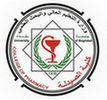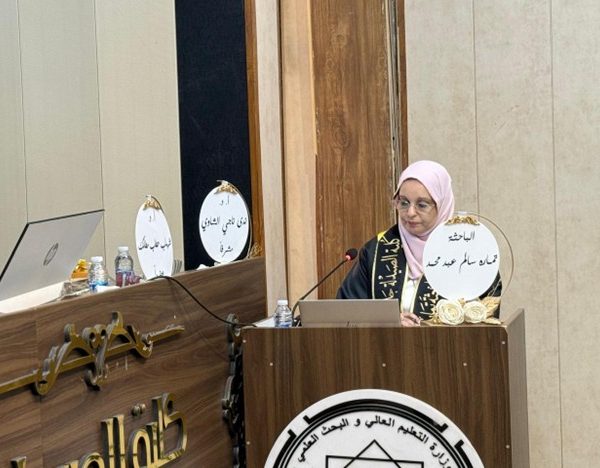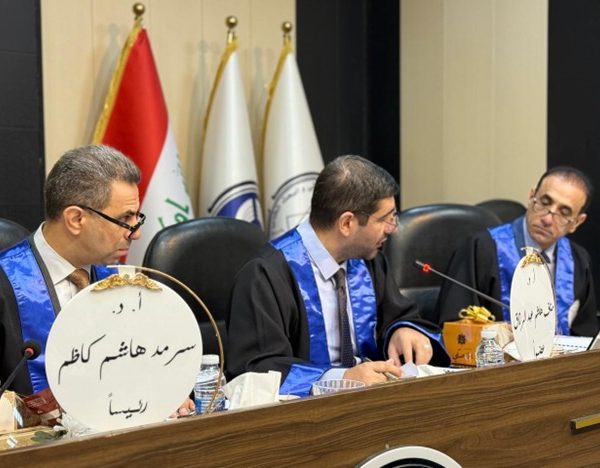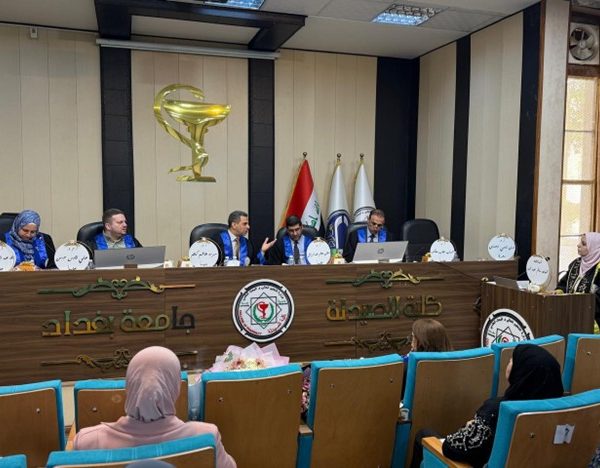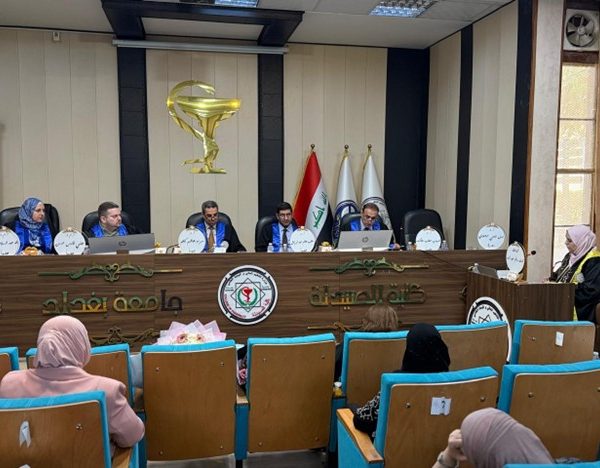The College of Pharmacy discussed the PhD dissertation entitled “Prophylactic Effects of Irigenin on Cyclophosphamide-induced Nephrotoxicity and Myelosuppression in Male Rats” by the student Tamara Salem Abed and the supervisor, Professor Dr. Nada Naji Al-Shawi, at the Pharmacology and Toxicology Department.
This study aimed to evaluate the possible protective effect of Irigenin, in comparison with vitamin E, against Cyclophosphamide-induced nephrotoxicity and myelosuppression in male rats.
The study included fifty adult male rats that were allocated into five groups of ten and treated as follows: Group I rats received 1% Tween-20 solution orally for 28 consecutive days, Group II rats received 1% Tween-20 solution orally for 28 consecutive days, and a single intraperitoneal injection of 150 mg/kg Cyclophosphamide on the 28th day of the experiment, Group III rats received 20 mg/kg Irigenin orally for 28 consecutive days, Group IV rats received 20 mg/kg Irigenin orally for 28 consecutive days, and a single intraperitoneal injection of 150 mg/kg Cyclophosphamide on the 28th day of the experiment, Group V rats received 50 mg/kg vitamin E orally for 28 consecutive days, and a single intraperitoneal injection of 150 mg/kg Cyclophosphamide on the 28th day of the experiment. After twenty-four hours from final administration, the experimental rats were euthanized, after which blood, as well as kidney and bone marrow tissue samples were obtained for subsequent analyses.
The results showed that rats pretreated with Irigenin or vitamin E had an improvement in kidney and bone marrow tissues, a reduction in the levels of serum urea and serum creatinine, as well as an improvement in hemoglobin level and count of red blood cells, white blood cells, and platelets compared to the Cyclophosphamide group. In addition, pretreatment with Irigenin or vitamin E attenuated Cyclophosphamide-induced oxidative stress and inflammation by increasing reduced glutathione (GSH) and glutathione peroxidase (GPx) levels, reducing malondialdehyde (MDA) levels, and downregulating the gene expression of interferon gamma (IFN-γ) and interleukin-17 (IL-17), while upregulating the gene expression of interleukin-10 (IL-10) in renal tissues. Also, pretreating rats with either Irigenin or vitamin E hindered Cyclophosphamide-mediated apoptosis, as it was evidenced by a reduction in caspase-3 and Fas levels, as well as an increase in B-cell lymphoma-2 (Bcl-2) level in renal tissues in comparison to the Cyclophosphamide group. Furthermore, it’s noteworthy to mention that no statistically significant differences were observed in the results of pretreating rats with Irigenin or vitamin E, except for GPx, MDA, Bcl-2 and the improvement in bone marrow tissue, where vitamin E had a stronger effect than Irigenin.
The study recommended that further research utilizing other doses of Irigenin and longer time intervals should be conducted. Also, to investigate whether Irigenin can have a protective effect against other drugs or toxin-induced nephrotoxicity and myelosuppression in rats.

